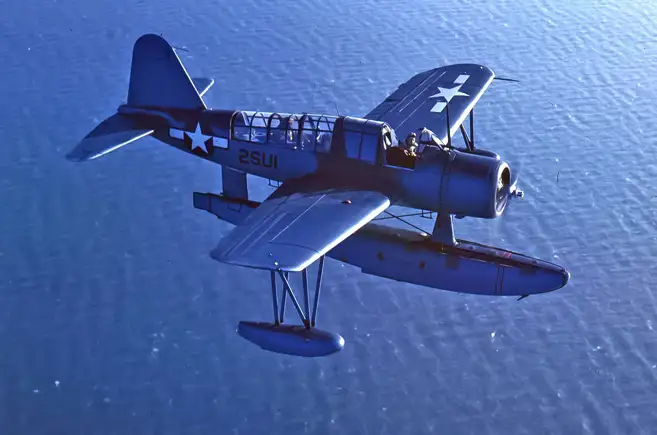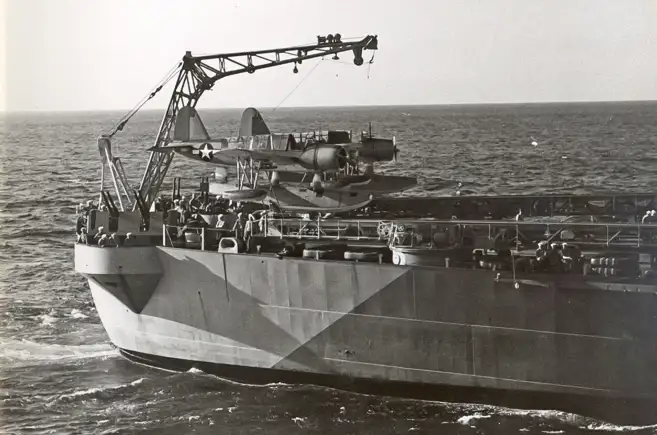6: Vought-Sikorsky OS2U Kingfisher

The Kingfisher was developed before the war to fill the role of observation floatplane. Embarked in the USN’s cruisers and battleships, it was intended to scout for enemy shipping and, when found, direct its own ship’s fire. This required a crew of two, with the observer in the rear cockpit calling corrections to the ship.
The first monoplane to serve in the role in the US Navy, the Kingfisher was also the first production type to be welded rather than riveted together. Powered by a 450hp Pratt & Whitney Wasp Junior engine, it could manage a respectable 170mph and was armed with two 0.30-inch M1919 machine guns and up to 650lb (295kg) of bombs and depth charges.

Launched from its ship by a short catapult, recovery onboard was achieved by taxiing onto a sled towed in the ship’s wake. A hook on the underside of the float engaged with the sled, which was then winched back to the ship before the Kingfisher was craned on-board.
In the Pacific, it directed gunfire in all the USN’s major battles. It became most famous for its rescue work. Most notably, in May 1944, a Kingfisher rescued 10 airmen from Truk. Too heavy to fly with them, they were carried on its wings while it taxied to the submarine USS Tang.


